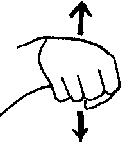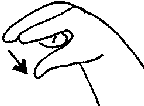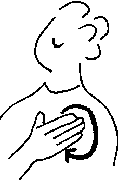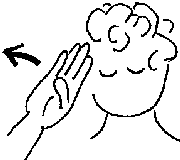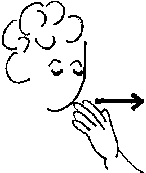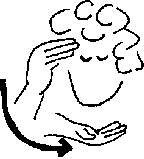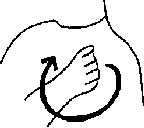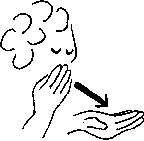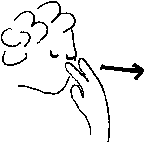In Room To Bloom Classroom we are doing a Tiny Tot Theater Production
Even though out TTT theater productions are not Kindermusik, we are covering a great deal of musical details for these students.
One of these is "Pantomime" a theater definition of creating a scene without using words or objects ... make believe your peeling a banana or reading a book. Frank Leto helps us with his famous song
"Pantomime.. "
We are working with Stop and Go with yet another Frank Leto song called
"Tip Toe"
We are using words like finding your Mark on stage... and cues with hands for off stage communication.
Speaking of Communication.. I am now starting to use ASL for teaching music to the students at Room
to Bloom as well..
This school so rocks !
Call Miss Ashley at Room To Bloom if your interested in her programs there.
There is also a great Kindergarten.
We have created some fun songs using the dynamics of loud and soft .
As we move along in class we will be experiencing more of the aspects of dynamics . Even though your children at Room to Bloom with not be getting all of the below.. they will be bringing the natural rhythm of music into their daily lives as well as learning a few fun facts about music drama and art..
Tra La La....
Miss Mana
Read up on this user friendly definition of Dynamics brought to you by Wikipedia . !
In
music,
dynamics normally refers to the
volume of a
sound or
note, but can also refer to every aspect of the execution of a given piece, either stylistic (staccato, legato etc.) or functional (velocity). The term is also applied to the written or printed
musical notation used to indicate dynamics. Dynamics are relative and do not indicate specific volume levels.
[edit]Relative loudness

Teacher. "And what does
ƒƒ mean?"
Pupil (after mature deliberation). "Fump-Fump."
Cartoon from
Punch magazine October 6, 1920
The two basic dynamic indications in music are:
- p or piano, meaning "soft".
- ƒ or forte, meaning "loud".
More subtle degrees of loudness or softness are indicated by:
- mp, standing for mezzo-piano, meaning "moderately soft".
- mƒ, standing for mezzo-forte, meaning "moderately loud".
Beyond f and p, there are also
- pp, standing for "pianissimo", and meaning "very soft",
- ƒƒ, standing for "fortissimo", and meaning "very loud",
To indicate an even softer dynamic than pianissimo,
ppp is marked, with the reading
pianissimo possibile ("softest possible"). The same is done on the loud side of the scale, with
ƒƒƒ being
fortissimo possibile ("loudest possible").
[2][3]

Note Velocity is a
MIDI measurement of the speed with which the key goes from its rest position to completely depressed, with 127, the largest value in a 7-bit number, being instantaneous, and meaning as loud as possible.
Few pieces contain dynamic designations with more than three
ƒ's (sometimes called "fortondoando") or
p's. In
Holst's
The Planets,
ƒƒƒƒ occurs twice in Mars and once in Uranus often punctuated by organ and
ƒƒƒ occurs several times throughout the work. It also appears in
Heitor Villa-Lobos'
Bachianas Brasileiras No. 4 (Prelude). The
Norman Dello Joio Suite for Piano ends with a crescendo to a
ƒƒƒƒ, and
Tchaikovsky indicated a bassoon solo
pppppp in his
Pathétique Symphonyand
ƒƒƒƒ in passages of his
1812 Overture and the 2nd movement of his
Fifth Symphony.
Igor Stravinsky used
ƒƒƒƒ at the end of the finale of the
Firebird Suite.
ƒƒƒƒ is also found in a prelude by
Rachmaninoff, op.3-2.
Shostakovich even went as loud as
ƒƒƒƒƒ in his
fourth symphony.
Gustav Mahler, in the third movement of his
Seventh Symphony, gives the celli and basses a marking of
ƒƒƒƒƒ, along with a footnote directing '
pluck so hard that the strings hit the wood.' On another extreme,
Carl Nielsen, in the second movement of his
Symphony No. 5, marked a passage for woodwinds a diminuendo to
ppppp. Another more extreme dynamic is in
György Ligeti's
Études No. 13 (
Devil's Staircase), which has at one point a
ƒƒƒƒƒƒ and progresses to a
ƒƒƒƒƒƒƒƒ. In Ligeti's
Études No. 9, he uses
pppppppp. In the baritone passage
Era la notte from his opera
Otello,
Verdi uses
pppp. Steane (1971) and others suggest that such markings are in reality a strong reminder to less than subtle singers to at least sing softly rather than an instruction to the singer actually to attempt a
pppp. Usually, the extra
f's or
'ps written reinforce either
ffor
pp, and are usually only for dramatic effect.
In music for marching band, passages louder than ƒƒƒ are sometimes colloquially referred to by descriptive terms such as "blastissimo".
Dynamic indications are relative, not absolute.
mp does not indicate an exact level of volume, it merely indicates that music in a passage so marked should be a little louder than
p and a little quieter than
mf. Interpretations of dynamic levels are left mostly to the performer; in the
Barber Piano Nocturne, a phrase beginning
ppis followed by a diminuendo leading to a
mp marking. Another instance of performer's discretion in this piece occurs when the left hand is shown to crescendo to a
ƒ, and then immediately after marked
p while the right hand plays the melody
ƒ. It has been speculated that this is used simply to remind the performer to keep the melody louder than the harmonic line in the left hand. In some
music notation programs, there are default
MIDI key velocity values associated with these indications, but more sophisticated programs allow users to change these as needed.
[edit]Sudden changes
Sudden changes in dynamics are notated by an
s prefixing the new dynamic notation, and the prefix is called
subito.
Subito is Italian as are most other dynamic notations, and translates into "suddenly".
[4] It is usually used along with
forzando (Italian for "forcing"), to make
subito forzando, or what most people refer to as just
sforzando (
sfz). Other common uses of subito are before a regular dynamic notation, like in
spp,
sf, or
sff.

Subito forzando (sfz) notation
Sforzando (or sforzato), indicates a forceful, sudden accent and is abbreviated as sƒz. Regular forzando (fz) indicates a forceful note, but with a slightly less sudden accent.
The
fortepiano notation
ƒp (or
subito fortepiano;
sƒp) indicates a
forte followed immediately by
piano. This notation is usually used to give an unusual strong (and sudden if
subito) accent.
One particularly noteworthy use of
forzando is in the second movement of
Joseph Haydn's
Surprise Symphony.
Rinforzando,
rƒz (literally "reinforcing") indicates that several notes, or a short phrase, are to be emphasized.
Rinforte (
rƒ) is also available.
[edit]Gradual changes
In addition, two words are used to show gradual changes in volume. These words are crescendo and diminuendo.
Crescendo, sometimes abbreviated to
cresc., literally translates "to become gradually stronger", but is interpreted as louder gradually, and the correct Italian
diminuendo -- abbreviated as
dim., means "to become gradually softer". The alternate and made-up English word
decrescendo, abbreviated to
decresc., also means "to get gradually softer". Signs sometimes referred to as "hairpins"
[5] are also used to stand for these words (See image). If the lines are joined at the left, then the indication is to get louder; if they join at the right, the indication is to get softer. The following notation indicates music starting moderately loud, then becoming gradually louder and then gradually quieter.

Hairpins are usually written below the
staff, but are sometimes found above, especially in music for
singers or in music with multiple melody lines being played by a single performer. They tend to be used for dynamic changes over a relatively short space of time, while
cresc.,
decresc. and
dim. are generally used for dynamic changes over a longer period. For long stretches, dashes are used to extend the words so that it is clear over what time the event should occur. It is not necessary to draw dynamic marks over more than a few bars, whereas word directions can remain in force for pages if necessary.
For quicker changes in dynamics,
cresc. molto and
dim. molto are often used, where the
molto means
much. Similarly, for slow changes
cresc. poco a poco and
dim. poco a poco are used, where
poco a poco translates to
little by little.
[6]
[edit]Words/phrases indicating changes of dynamics
(In Italian unless otherwise indicated)
- al niente: to nothing; fade to silence. Sometimes written as "
 n"
n"
- calando: becoming smaller
- calmando: become calm
- crescendo: becoming stronger
- dal niente: from nothing; out of silence
- decrescendo or diminuendo: becoming softer
- fortepiano: loud and accented and then immediately soft
- fortissimo piano: very loud and then immediately soft
- in rilievo: in relief (French en dehors: outwards); indicates that a particular instrument or part is to play louder than the others so as to stand out over the ensemble. In the circle of Arnold Schoenberg, this expression had been replaced by the letter "H" (for German, "Hauptstimme"), with an added horizontal line at the letter's top, pointing to the right, the end of this passage to be marked by the symbol "┐ ".
- perdendo or perdendosi: losing volume, fading into nothing, dying away
- mezzoforte piano: moderately strong and then immediately soft
- morendo: dying away (may also indicate a tempo change)
- marcato: stressed, pronounced
- pianoforte: soft and then immediately strong
- sforzando piano: with marked and sudden emphasis, then immediately soft
- sotto voce: in an undertone (whispered or unvoiced)[7]
- smorzando: dying away
[edit]History
The
Renaissance composer Giovanni Gabrieli was one of the first to indicate dynamics in
music notation, but dynamics were used sparingly by composers until the late 18th century.
Bach used some dynamic terms, including
forte,
piano,
più piano, and
pianissimo (although written out as full words), and in some cases it may be that
ppp was considered to mean
pianissimo in this period.
The fact that the
harpsichord could play only "terraced" dynamics (either loud or soft, but not in between), and the fact that composers of the period did not mark gradations of dynamics in their scores, has led to the "somewhat misleading suggestion that baroque dynamics are 'terraced dynamics'," writes Robert Donington.
[8] In fact, baroque musicians constantly varied dynamics. "Light and shade must be constantly introduced... by the incessant interchange of loud and soft," wrote
Johann Joachim Quantz in 1752.
[9] In addition to this, the harpsichord in fact becomes louder or softer depending on the thickness of the musical texture (four notes are louder than two). This allowed composers such as Bach to build dynamics directly into their compositions, without the need for notation.
In the Romantic period, composers greatly expanded the vocabulary for describing dynamic changes in their scores. Where Haydn and Mozart specified six levels (
pp to
ff), Beethoven used also
ppp and
fff(the latter less frequently), and Brahms used a range of terms to describe the dynamics he wanted. In the slow movement of the trio for violin, waldhorn and piano (Opus 40), he uses the expressions
ppp,
molto piano, and
quasi niente to express different qualities of quiet.
[edit]See also
